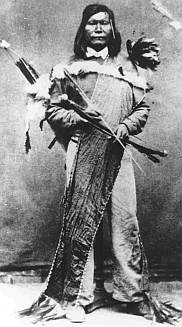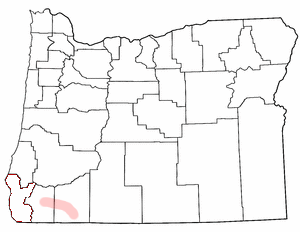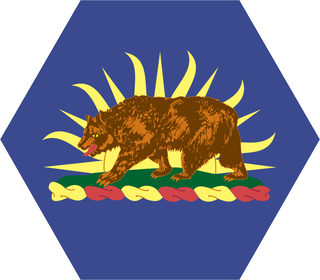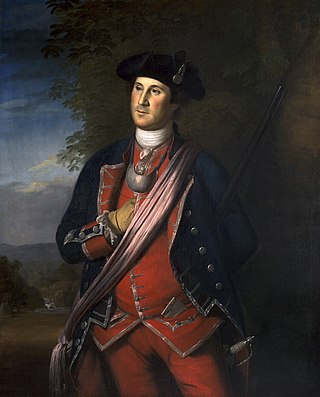
Plumas County is a county in the Sierra Nevada of the U.S. state of California. As of the 2020 census, the population was 19,790. The county seat is Quincy, and the only incorporated city is Portola. The largest community in the county is East Quincy. The county was named for the Spanish Río de las Plumas, which flows through it. The county itself is also the namesake of a native moth species, Hadena plumasata.

The American Indian Wars, also known as the American Frontier Wars, and the Indian Wars, were fought by European governments and colonists in North America, and later by the United States and Canadian governments and American and Canadian settlers, against various American Indian and First Nation tribes. These conflicts occurred in North America from the time of the earliest colonial settlements in the 17th century until the early 20th century. The various wars resulted from a wide variety of factors, the most common being the desire of settlers and governments for Indian tribes' lands. The European powers and their colonies also enlisted allied Indian tribes to help them conduct warfare against each other's colonial settlements. After the American Revolution, many conflicts were local to specific states or regions and frequently involved disputes over land use; some entailed cycles of violent reprisal.
The Cayuse War was an armed conflict that took place in the Northwestern United States from 1847 to 1855 between the Cayuse people of the region and the United States Government and local American settlers. Caused in part by the influx of disease and settlers to the region, the immediate start of the conflict occurred in 1847 when the Whitman massacre took place at the Whitman Mission near present-day Walla Walla, Washington when thirteen people were killed in and around the mission. Over the next few years the Provisional Government of Oregon and later the United States Army battled the Native Americans east of the Cascades. This was the first of several wars between the Native Americans and American settlers in that region that would lead to the negotiations between the United States and Native Americans of the Columbia Plateau, creating a number of Indian reservations.
The Mariposa War, also known as the Yosemite Indian War, was a conflict between the United States and the indigenous people of California's Sierra Nevada in the 1850s. The war was fought primarily in Mariposa County and surrounding areas, and was sparked by the discovery of gold in the region. As a result of the military expedition, the Mariposa Battalion became the first non-indigenous group to enter Yosemite Valley and the Nelder Grove.

Plumas National Forest is a 1,146,000-acre (4,640 km2) United States National Forest located at the northern terminus of the Sierra Nevada, in northern California. The Forest was named after its primary watershed, the Rio de las Plumas, or Feather River.

The Yakima War (1855–1858), also referred to as the Yakima Native American War of 1855 or the Plateau War, was a conflict between the United States and the Yakama, a Sahaptian-speaking people of the Northwest Plateau, then part of Washington Territory, and the tribal allies of each. It primarily took place in the southern interior of present-day Washington. Isolated battles in western Washington and the northern Inland Empire were sometimes separately referred to as the Puget Sound War and the Palouse War, respectively.

The Paiute War, also known as the Pyramid Lake War, Washoe Indian War and the Pah Ute War, was an armed conflict between Northern Paiutes allied with the Shoshone and the Bannock against settlers from the United States, supported by military forces. It took place in May 1860 in the vicinity of Pyramid Lake in the Utah Territory, now in the northwest corner of present-day Nevada. The war was preceded by a series of increasingly violent incidents, culminating in two pitched battles in which 79 Whites and 25 Indigenous people were killed. Smaller raids and skirmishes continued until a cease-fire was agreed to in August 1860; there was no treaty.

The Puget Sound War was an armed conflict that took place in the Puget Sound area of the state of Washington in 1855–56, between the United States military, local militias and members of the Native American tribes of the Nisqually, Muckleshoot, Puyallup, and Klickitat. Another component of the war, however, were raiders from the Haida and Tlingit who came into conflict with the United States Navy during contemporaneous raids on the native peoples of Puget Sound. Although limited in its magnitude, territorial impact and losses in terms of lives, the conflict is often remembered in connection to the 1856 Battle of Seattle and to the execution of a central figure of the war, Nisqually Chief Leschi. The contemporaneous Yakima War may have been responsible for some events of the Puget Sound War, such as the Battle of Seattle, and it is not clear that the people of the time made a strong distinction between the two conflicts.

The Rogue River Wars were an armed conflict in 1855–1856 between the U.S. Army, local militias and volunteers, and the Native American tribes commonly grouped under the designation of Rogue River Indians, in the Rogue River Valley area of what today is southern Oregon. The conflict designation usually includes only the hostilities that took place during 1855–1856, but there had been numerous previous skirmishes, as early as the 1830s, between European American settlers and the Native Americans, over territory and resources.
The Pitt River Expedition is a series of expeditions in the U.S. state of California in the 1850s. The expeditions are named for the Pit River, one of many tributaries of the Sacramento River, and the Pitt River Indians. The expeditions were part of the larger American Indian Wars and took place during the California Gold Rush.

The Yana are a group of Native Americans indigenous to Northern California in the central Sierra Nevada, on the western side of the range. Their lands, prior to encroachment by white settlers, bordered the Pit and Feather rivers. They were nearly destroyed during the California genocide in the latter half of the 19th century. The Central and Southern Yana continue to live in California as members of Redding Rancheria.

The California Army National Guard is one of three components of the California National Guard, a reserve of the United States Army, and part of the National Guard of the United States. The California Army National Guard is composed of 18,450 soldiers. Nationwide, the Army National Guard comprises approximately one half of the US Army's available combat forces and approximately one third of its support organization. National coordination of various state National Guard units are maintained through the National Guard Bureau.
Klamath and Salmon River War, or Klamath War, or Red Cap War, or Klamath River Massacres, was an American Indian War which occurred in Klamath County California from January to March 1855. The war began from incidents between local settlers and local Indians and a rumor of an Indian uprising against the miners along the Klamath River by the Yurok and Karok Native American tribes. Local miners wanted the Indians armed with guns and ammunition disarmed, anyone trading them to the Indians whipped and expelled from the County and any Indian found with firearms after that time was to be killed. Some of the Indians, mainly a group called the "Red Caps", refused to disarm, and hostilities began between them and the miners. Troops from the California State Militia and U. S. Army were necessary to stop the war.
The Indiana Rangers, also known as the Indiana Territorial Mounted Rangers, were a mounted militia formed in 1807 and operated in the early part of the 19th century to defend settlers in Indiana Territory from attacks by Native Americans. The rangers were present at the Battle of Tippecanoe, and served as auxiliaries to the army during the War of 1812. At the peak of their activities they numbered over 400 men.

Colonial American military history is the military record of the Thirteen Colonies from their founding to the American Revolution in 1775.

Presidio San Agustín del Tucsón was a presidio located within Tucson, Arizona, United States. The original fortress was built by Spanish soldiers during the 18th century and was the founding structure of what became the city of Tucson. After the American arrival in 1846, the original walls were dismantled, with the last section torn down in 1918. A reconstruction of the northeast corner of the fort was completed in 2007 following an archaeological excavation that located the fort's northeast tower.

Bald Hills War (1858–1864) was a war fought by the forces of the California Militia, California Volunteers and soldiers of the U.S. Army against the Chilula, Lassik, Hupa, Mattole, Nongatl, Sinkyone, Tsnungwe, Wailaki, Whilkut and Wiyot Native American peoples.
The California Indian Wars were a series of wars, battles, and massacres between the United States Army, and the Indigenous peoples of California. The wars lasted from 1850, immediately after Alta California, acquired during the Mexican–American War, became the state of California, to 1880 when the last minor military operation on the Colorado River ended the Calloway Affair of 1880.
The Tule River War of 1856 was a conflict where American settlers, and later, California State Militia, and a detachment of the U. S. Army from Fort Miller, fought a six-week war against the Yokuts in the southern San Joaquin Valley.
United States Rangers were originally raised for Tecumseh's War, but they continued to serve against hostile Indians after the United States declaration of war against Great Britain. A total of 17 independent companies were authorized from Kentucky, Ohio, Indiana, Illinois and Missouri. The Rangers were neither militia, nor regulars, but formed part of the war establishment of the United States as volunteers.











